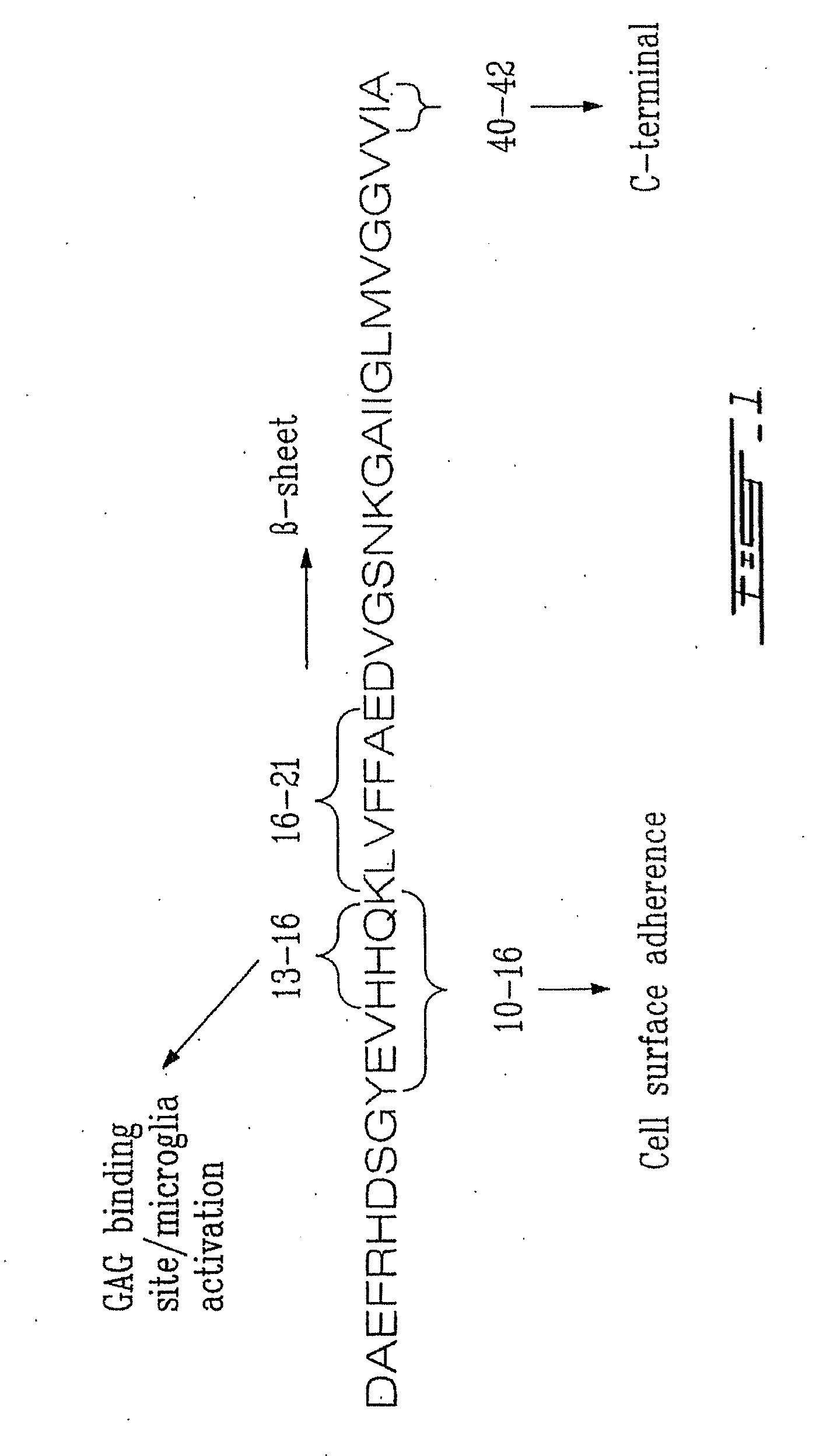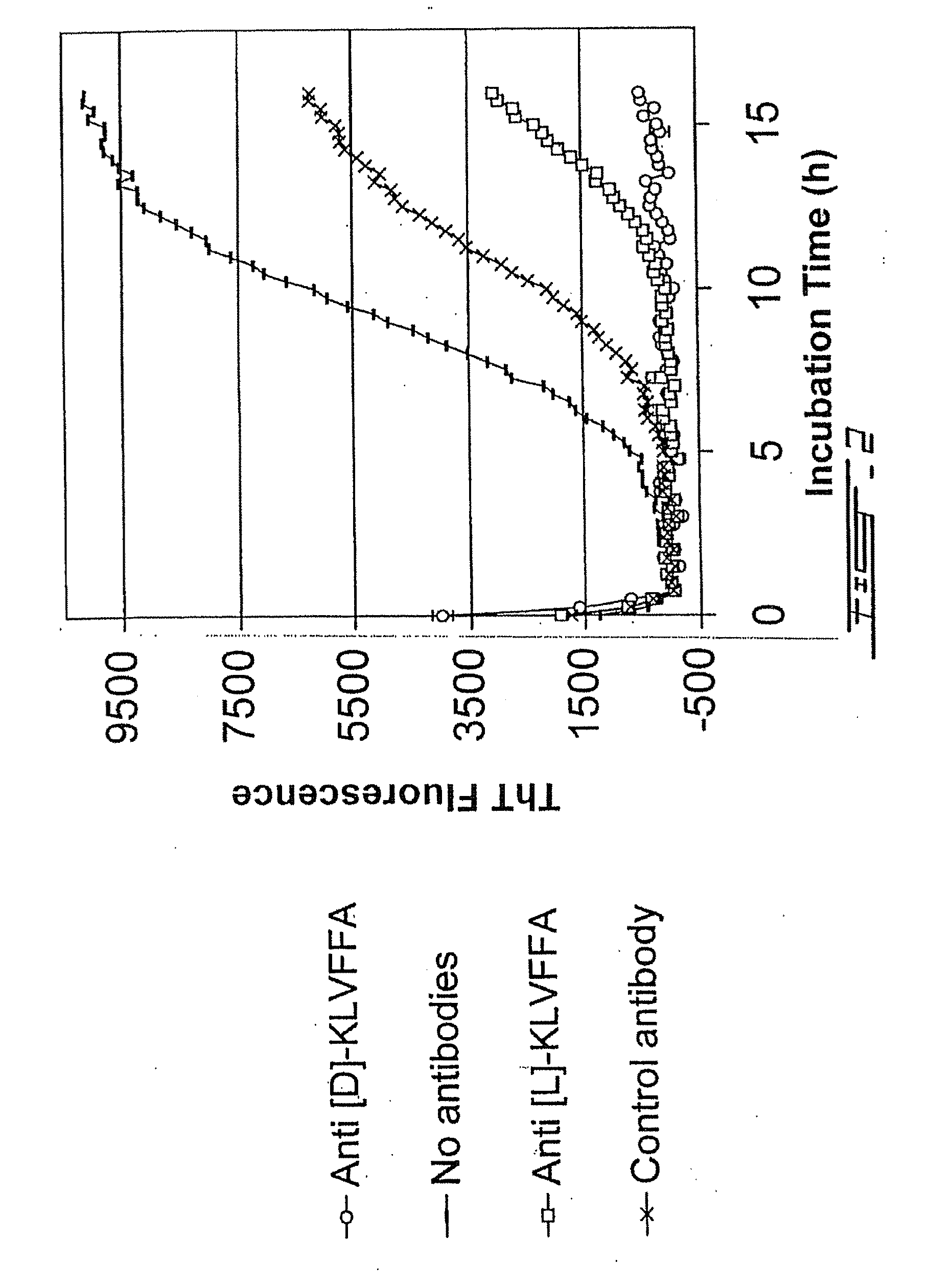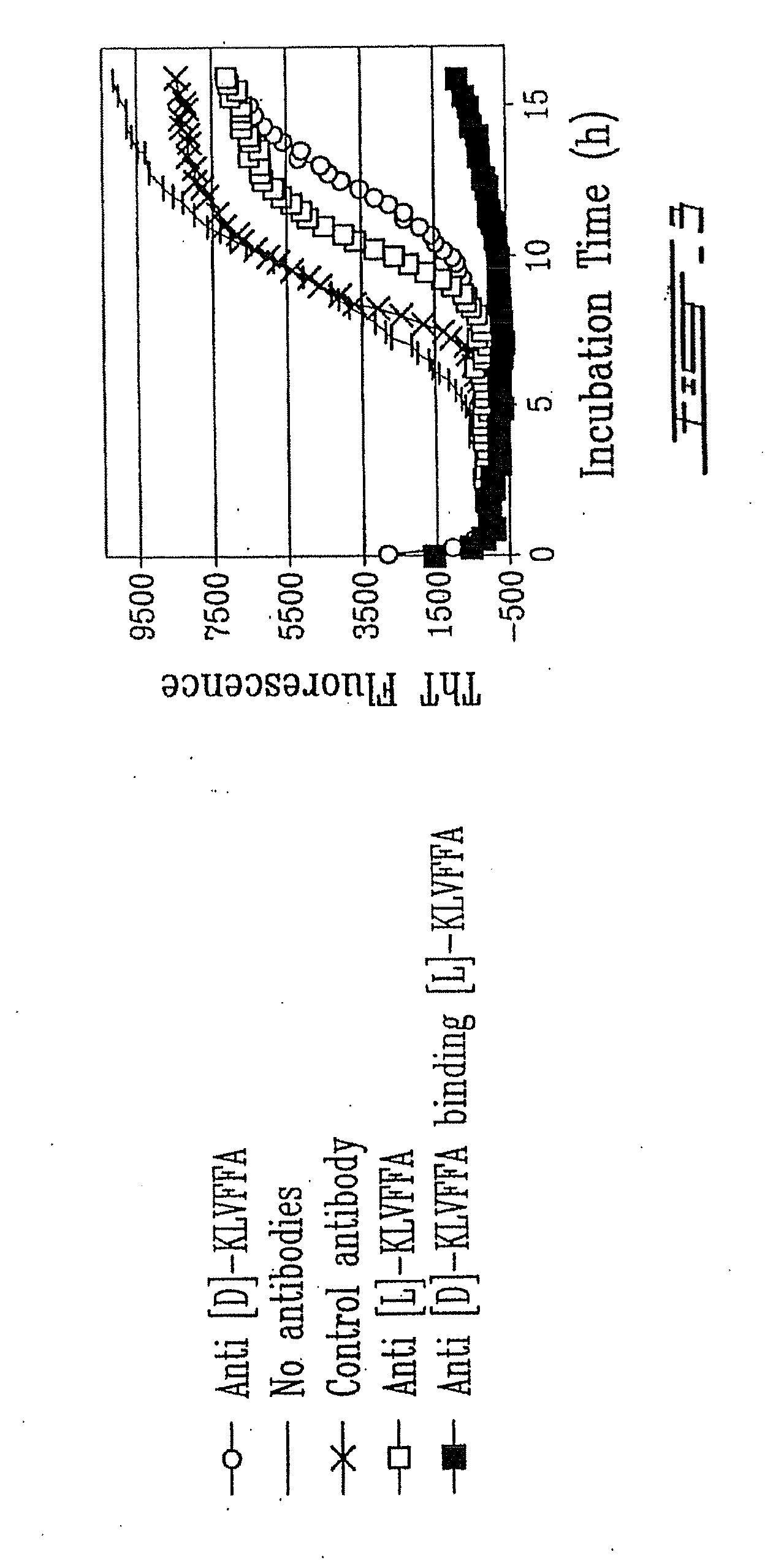Vaccine for the Prevention and Treatment of Alzheimer's and Amyloid Related Diseases
a technology for amyloid and alzheimer's, applied in the direction of nervous system antigen ingredients, animal/human peptides, peptide sources, etc., can solve the problems of inability to prevent nor cure disease, no known, widely accepted therapy or treatment which significantly dissolves amyloidotic fibrils in situ, and inability to achieve the effect of preventing fibrillogenesis
- Summary
- Abstract
- Description
- Claims
- Application Information
AI Technical Summary
Benefits of technology
Problems solved by technology
Method used
Image
Examples
example i
[0156] An in vitro validation procedure to test the effectiveness of all-D peptide vaccines derived from fibrillogenic proteins was performed in rabbits or mice to demonstrate that antibodies can be raised against Aβ 16-21 (all-D) (see FIG. 7). The antibodies produced were tested to prove that they effectively prevent the fibrillogenesis of natural Aβ(1-40, all-L) in vitro. Standard assays for fibrillogenesis were used to evaluate activity, such as those based on Thioflavine T, circular dichroism and solubility.
[0157] This approach could also be used to establish which areas of the Aβ peptide are most effective when used in the form of all-D peptides to prepare antifibrillogenic vaccines. One way this could be performed is as follows:
[0158] a) rabbits or mice are immunized with a series of overlapping all-D peptides generated from the Aβ(1-42) sequence, e.g., Aβ(1-6), Aβ(2-8), Aβ(4-10), etc.
[0159] b) antisera are prepared from the immunized rabbits or mice.
[0160] c) these antise...
example ii
Effect of Antibodies Against D- and L-Aβ(16-21) Peptide Vaccine on Fibrillogenesis
[0161] A validation procedure to test anti-fibrillogenic activity of antibodies raised against D- and L- Aβ(16-21) peptide was performed.
[0162] Rabbits were immunized with D- or L-Aβ (16-21) peptide. Antibodies raised were tested for their anfifibrillogenic activities by ThT assay and by electron microscopy (EM).
[0163] Antibodies raised against the D- and L- forms of KLVFFA were capable of blocking the fibrillogenesis process as seen either by the Thioflavin T assay (ThT) (FIGS. 2 and 3) and by EM (FIGS. 4A to 4C). In the ThT assay, fibril formation is monitored by the increase in fluorescence with time. As seen in the Figures, the antibodies were capable of inhibiting such an increase in fluorescence, proving that these antibodies were inhibiting fibrillogenesis.
[0164] As can be seen in these figures (FIGS. 2 to 4), antibodies raised against the D-peptide have a better anti-fibrillogenic activity...
example iii
[0166] Brain sections were stained with antibodies raised against KLVFFA peptide (D and L forms). As seen in FIGS. 5A to 5D and 6A to 6D, the antibodies were not capable of binding to aggregated (ThioS positive) Aβ. It can be seen from both sets of figures, which were stained for both plaques (ThioS) and anti-peptides that the antibodies are recognizing AP at the surface of the cells but are not capable of binding to plaques. These results show that the anti-KLVFFA peptide antibody is recognizing the non-fibrillary Aβ but does not bind to aggregated Aβ. There was no difference between the anti-D and anti-L peptide antibodies in this assay.
[0167] These results clearly prove that the antibody recognizes only the non-aggregated form and blocks the fibrillogenesis. By having such activity, the vaccine of the present invention 1) prevents Aβ from organizing itself into a fibril and 2) prevents an inflammatory response being triggered by such an antibody binding to...
PUM
| Property | Measurement | Unit |
|---|---|---|
| Disorder | aaaaa | aaaaa |
Abstract
Description
Claims
Application Information
 Login to View More
Login to View More - R&D Engineer
- R&D Manager
- IP Professional
- Industry Leading Data Capabilities
- Powerful AI technology
- Patent DNA Extraction
Browse by: Latest US Patents, China's latest patents, Technical Efficacy Thesaurus, Application Domain, Technology Topic, Popular Technical Reports.
© 2024 PatSnap. All rights reserved.Legal|Privacy policy|Modern Slavery Act Transparency Statement|Sitemap|About US| Contact US: help@patsnap.com










